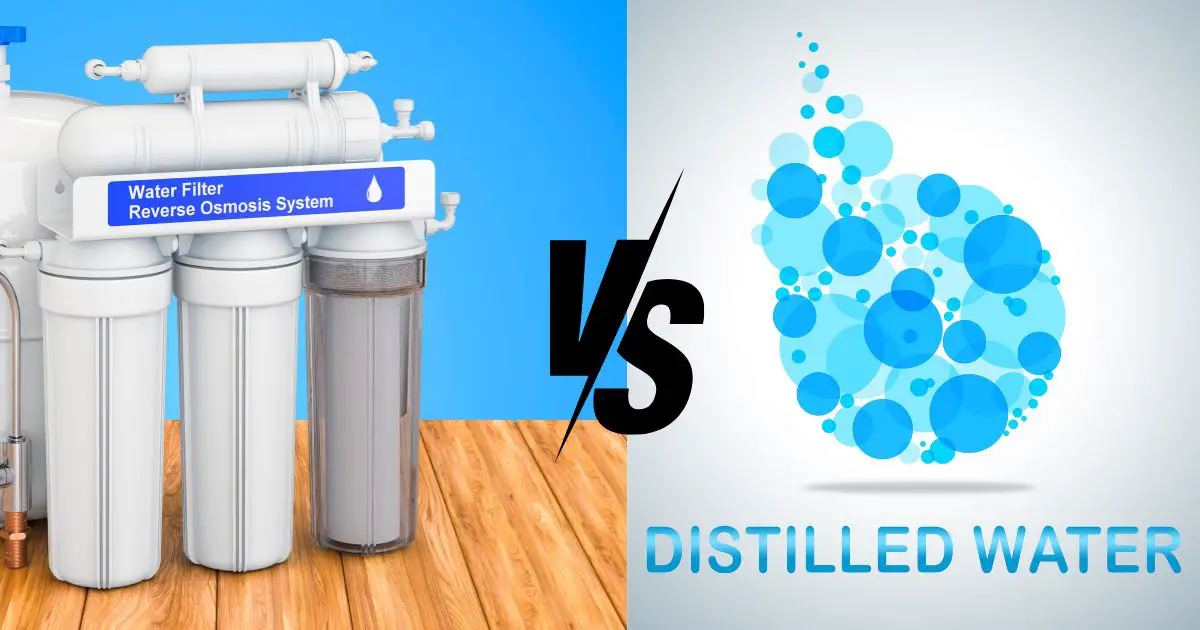Water purification is essential for safe drinking water, and two of the most common purification methods are reverse osmosis (RO) and distillation. But are they the same? Is reverse osmosis water distilled water?
In this article, we will break down the differences and similarities between reverse osmosis water and distilled water, their benefits, and which one is best for drinking and other applications.
What is Reverse Osmosis Water?
Definition and Process
Reverse osmosis (RO) is a water filtration process that removes contaminants, minerals, and impurities by using a semi-permeable membrane. The process works by applying pressure to force water through this membrane, which allows only water molecules to pass while blocking:
- Heavy metals (lead, arsenic, mercury)
- Bacteria and viruses
- Chlorine and fluoride
- Pesticides and nitrates
- Dissolved salts and other impurities
Steps in Reverse Osmosis Filtration
- Pre-filtration – Removes larger particles like sediment and chlorine.
- Membrane Filtration – Water is pushed through a semi-permeable membrane, filtering out microscopic impurities.
- Post-filtration – Additional carbon filters improve taste and remove any remaining contaminants.
- Storage and Delivery – Clean water is stored in a tank, ready for use.
RO systems are widely used in home water filters, bottled water production, and industrial water purification.
What is Distilled Water?
Definition and Process
Distillation is another purification method that involves boiling water, collecting the steam, and condensing it back into liquid form. This process effectively removes:
- Bacteria and viruses
- Dissolved salts and minerals
- Heavy metals and contaminants
Steps in the Distillation Process
- Heating – Water is boiled, turning into steam.
- Condensation – The steam is collected and cooled to become liquid.
- Storage – The purified water is stored in a clean container.
Distilled water is commonly used in laboratories, medical applications, and steam irons because it is free from almost all dissolved minerals and contaminants.
Is Reverse Osmosis Water the Same as Distilled Water?
While both RO water and distilled water are purified and free from most contaminants, they are not the same. Here’s a breakdown of their key differences:
1. Purification Process
- RO Water – Uses a membrane filtration process to remove contaminants.
- Distilled Water – Uses boiling and condensation to purify water.
2. Removal of Contaminants
- RO Water – Removes most contaminants, but some dissolved gases and volatile chemicals may remain.
- Distilled Water – Removes nearly all impurities, including bacteria, viruses, and minerals.
3. Mineral Content
- RO Water – Removes most minerals, but some may remain unless further filtration is used.
- Distilled Water – Removes all minerals, making it completely pure.
4. Taste and pH Level
- RO Water – Slightly acidic (pH 5-7) and has a neutral or slightly flat taste.
- Distilled Water – Very neutral but can taste “flat” due to the lack of minerals.
5. Energy Efficiency
- RO Filtration – More energy-efficient; requires pressure but not heat.
- Distillation – Requires a lot of energy to boil and condense water.
6. Bacteria Removal
- RO Water – Filters out bacteria, but if the system is not maintained, bacteria can grow in the storage tank.
- Distilled Water – The boiling process kills all bacteria and viruses.
Which is Better: Reverse Osmosis or Distilled Water?
The best choice depends on how you plan to use the water. Let’s compare their applications:
1. Drinking Water
- RO Water is better for drinking because it retains some essential minerals.
- Distilled Water is too pure and lacks minerals like calcium and magnesium, which are important for health.
2. Cooking
- RO Water is great for cooking as it removes contaminants but still contains some minerals.
- Distilled Water can be used, but it may alter the taste of food.
3. Medical and Laboratory Use
- Distilled Water is preferred in hospitals, laboratories, and medical devices because it is completely free from minerals and contaminants.
- RO Water may still contain trace amounts of dissolved gases, making it less ideal for medical use.
4. Car Batteries and Steam Irons
- Distilled Water is best because it prevents mineral buildup in appliances.
- RO Water may still contain some dissolved minerals, which can cause scaling.
5. Aquarium Water
- RO Water is commonly used in fish tanks because it removes harmful contaminants but still allows remineralization.
- Distilled Water is too pure and needs added minerals for fish and plants to thrive.
Pros and Cons of RO Water and Distilled Water
| Feature | Reverse Osmosis Water | Distilled Water |
|---|---|---|
| Removes Contaminants | Yes | Yes |
| Removes Minerals | Mostly | Completely |
| Kills Bacteria/Viruses | No (needs UV filter) | Yes |
| Energy Efficient? | Yes | No (requires boiling) |
| Tastes Better? | Yes | Flat taste |
| Best for Drinking? | Yes | No (lacks minerals) |
| Best for Medical Use? | No | Yes |
Final Verdict: Is Reverse Osmosis Water the Same as Distilled Water?
No, reverse osmosis water is not the same as distilled water. Both methods purify water, but:
RO Water removes contaminants while keeping some essential minerals, making it better for drinking.
Distilled Water removes all impurities, including minerals, making it ideal for medical, industrial, and laboratory use.
If you’re looking for clean, great-tasting drinking water, reverse osmosis is the better choice. If you need pure water for medical or mechanical applications, distilled water is the way to go.
Would you like recommendations on the best RO systems or distilled water brands? Let me know!
